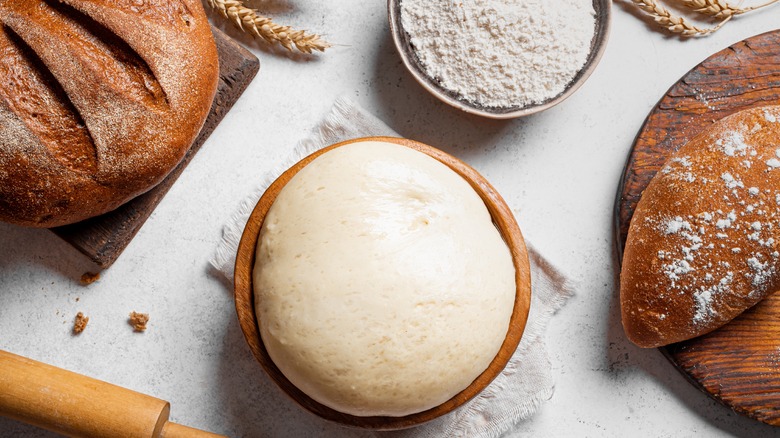Although the trend of making fresh-baked sourdough bread took off years ago, we’re still just as in love with the process as ever. Unfortunately, it’s difficult for our gluten-free friends to enjoy the same tangy, airy bread. Gluten is integral to making sourdough, so we tapped an expert for a swap that will help us make a gluten-free version.
Most tutorials for sourdough starters call for bread flour, a high-protein flour that’s also high in gluten. This gluten gives bread its structure. Thankfully, Nathan Myhrvold, founder of Modernist Cuisine and the lead author for “Modernist Bread” and the forthcoming “Modernist Pizza,” has found a workaround for this. He uses a blend of gluten-free flours, with glutinous rice flour being the key component. “Of these ingredients, the glutinous rice flour played a major role in our baking success: When hydrated in doughs and then baked, it retains a particular chewiness reminiscent of gluten,” Myhrvold told Look.
This flour is quite sweet, so Myhrvold combines it with a blend of white and brown rice flour, tapioca starch, and cornstarch to get the right taste. With the flavor and chewiness down, he then relies on xanthan gum to perfect the structure of his gluten-free sourdough. “It absorbs water and makes the mixture more viscous, helping evenly disperse and suspend the starch particles in the crumb and partially substituting for the structure that gluten would normally provide,” he said of the thickener.
Does this method work for other gluten-free flours?

While Nathan Myhrvold credits glutinous rice flour with creating the chewiness of his gluten-free sourdough, he says it can be replaced with other kinds of flour, too. “In our tests, we found that you can substitute the blend for the flours in many of our standard recipes,” he told Look. If you don’t have glutinous rice flour, sorghum flour is good for making chewy baked goods. That said, it’s also sweet like glutinous rice flour, so you can combine it with buckwheat flour for an earthy balance.
More than anything, your gluten-free bread will need help with rising. Myhrvold uses yeast in his dough to prevent the loaf from being flat. “For levain-based doughs, like sourdough, you should add a .7%-.9% instant dry yeast with the water in the dough,” he stated. “You’ll mix the doughs into a homogeneous mass and bulk ferment them according to the recipe. This is for flavor development, not gluten development, so you don’t have to perform any folds.”
Yeast is gluten-free, and while it’s not required for regular sourdough, it speeds up the bulk fermentation process, in which bread gets its unique flavor and structure. The folding that typically occurs during bulk fermentation is meant to connect the strands of gluten together, which ultimately helps the bread rise. In gluten-free bread, the yeast takes over this role and eliminates the need for folding.






